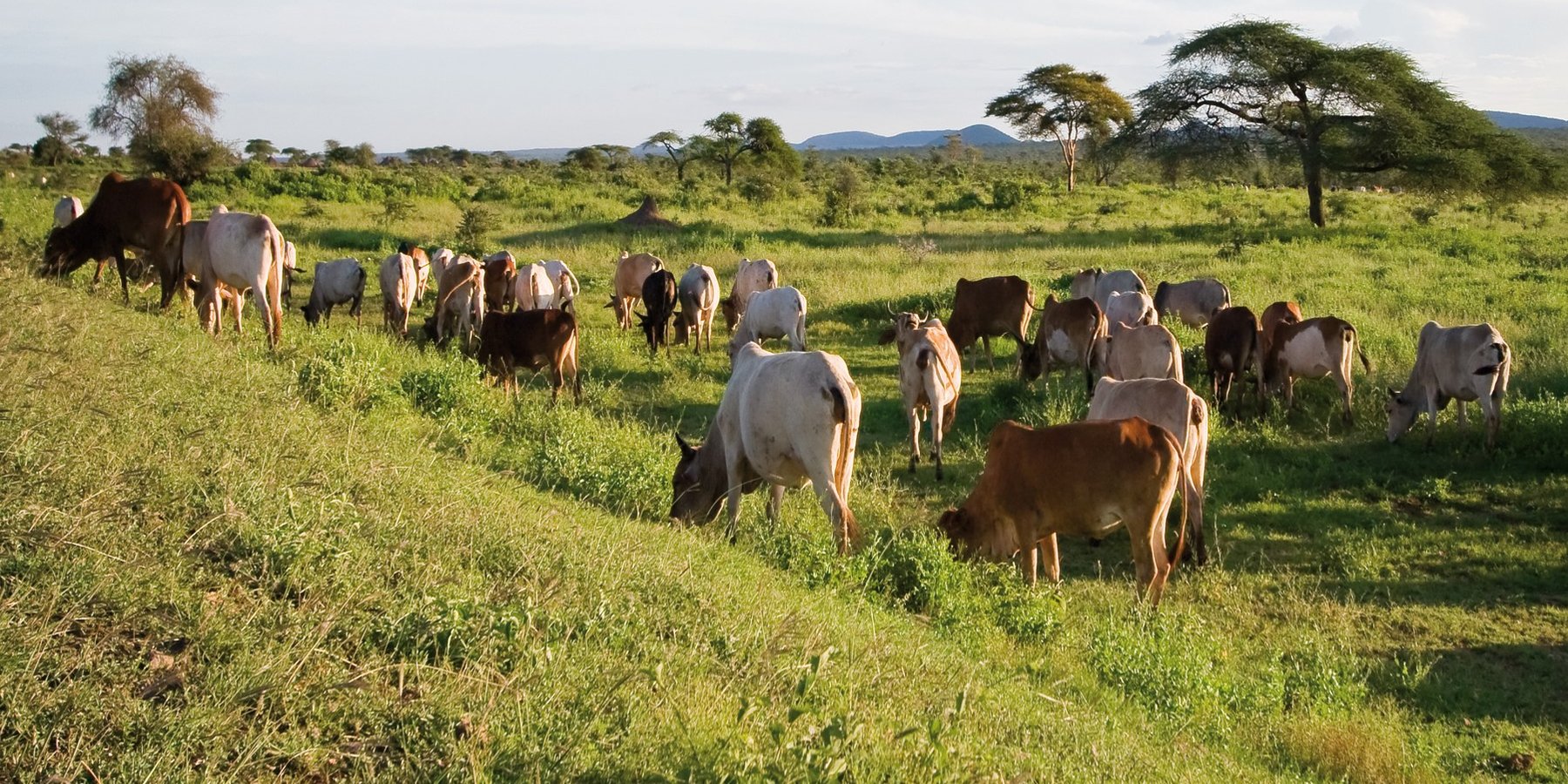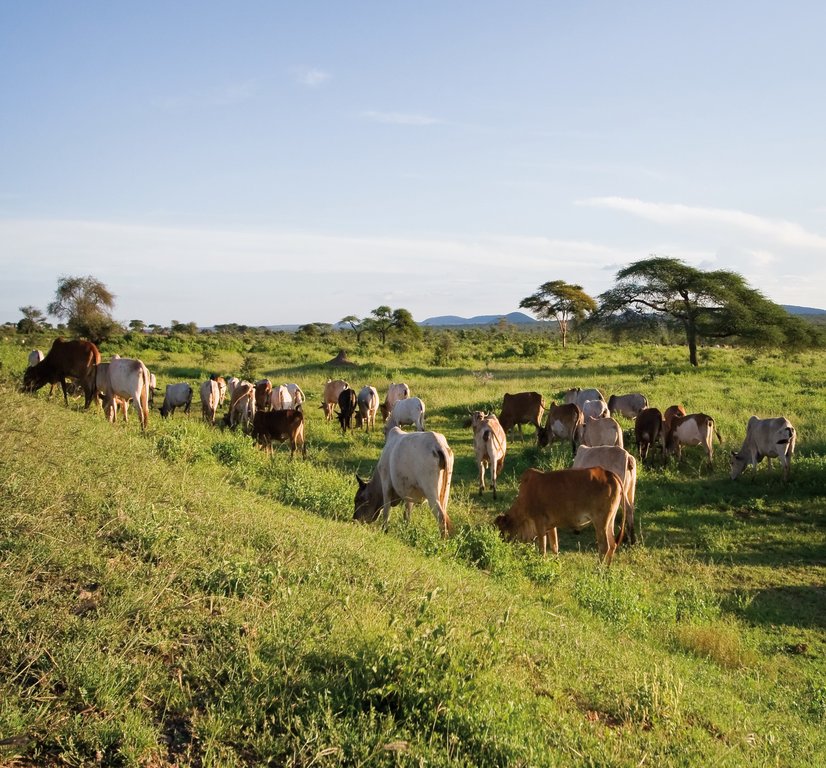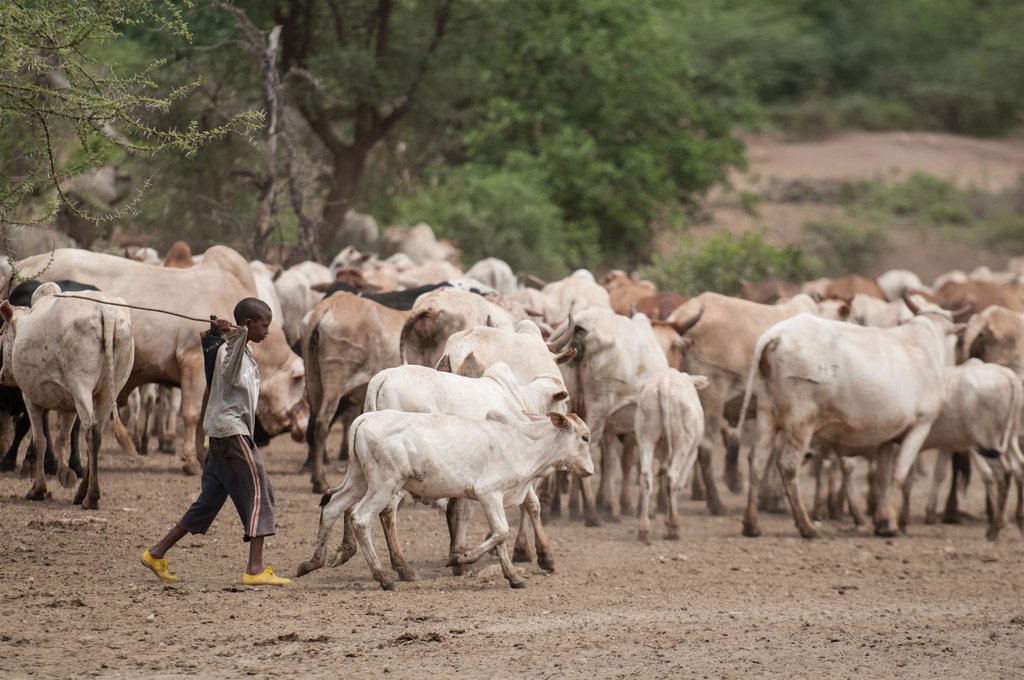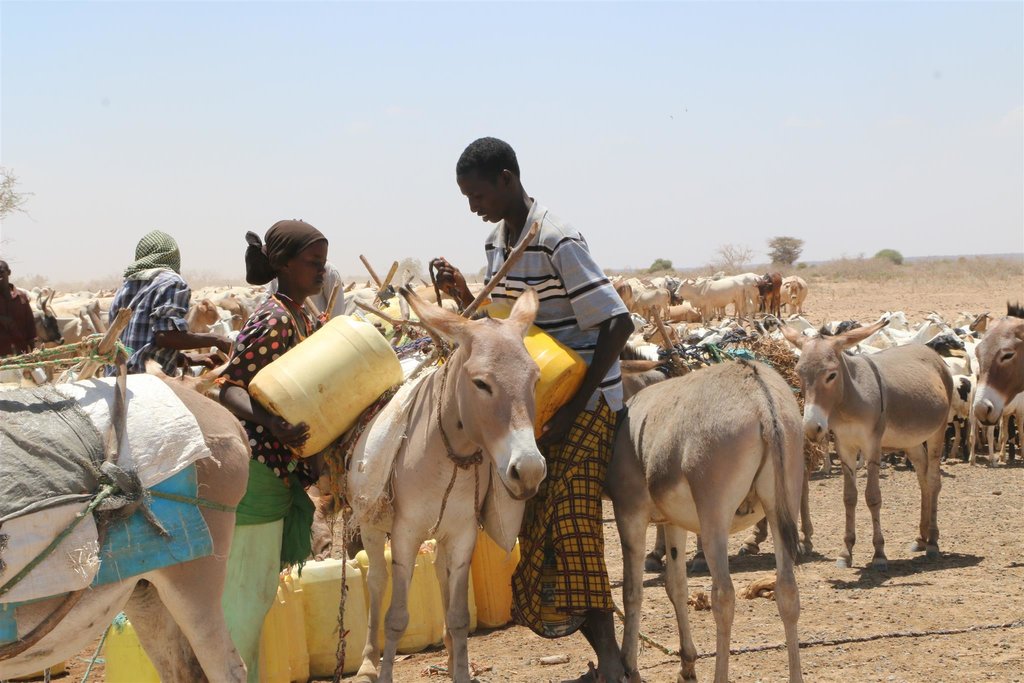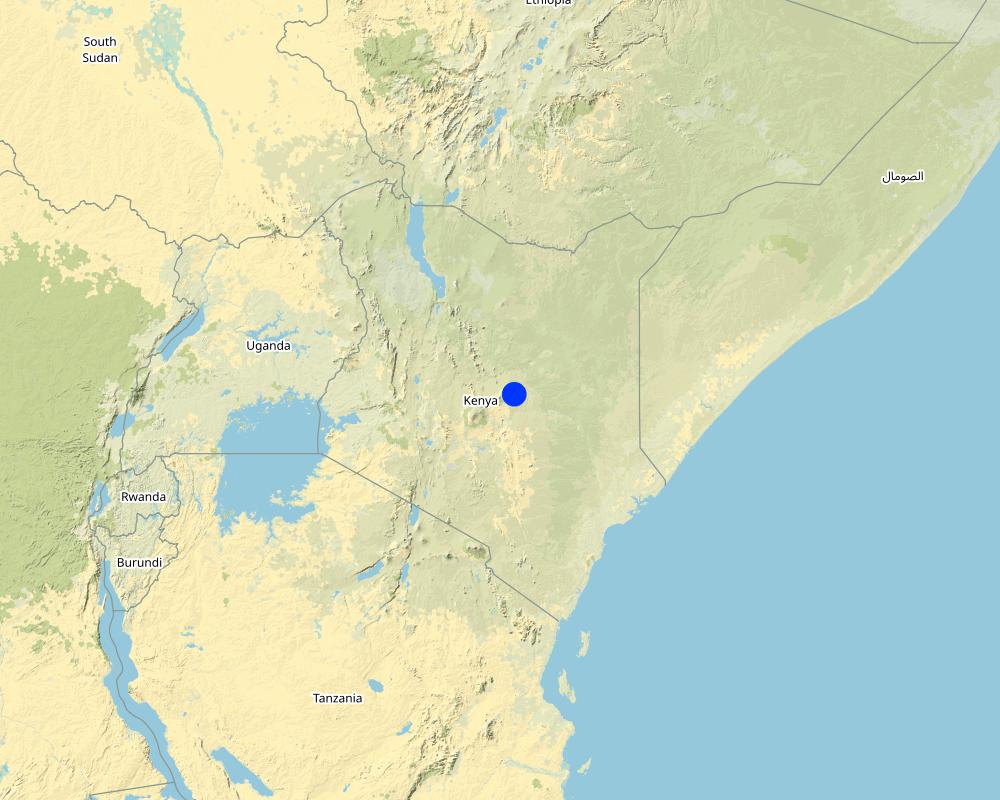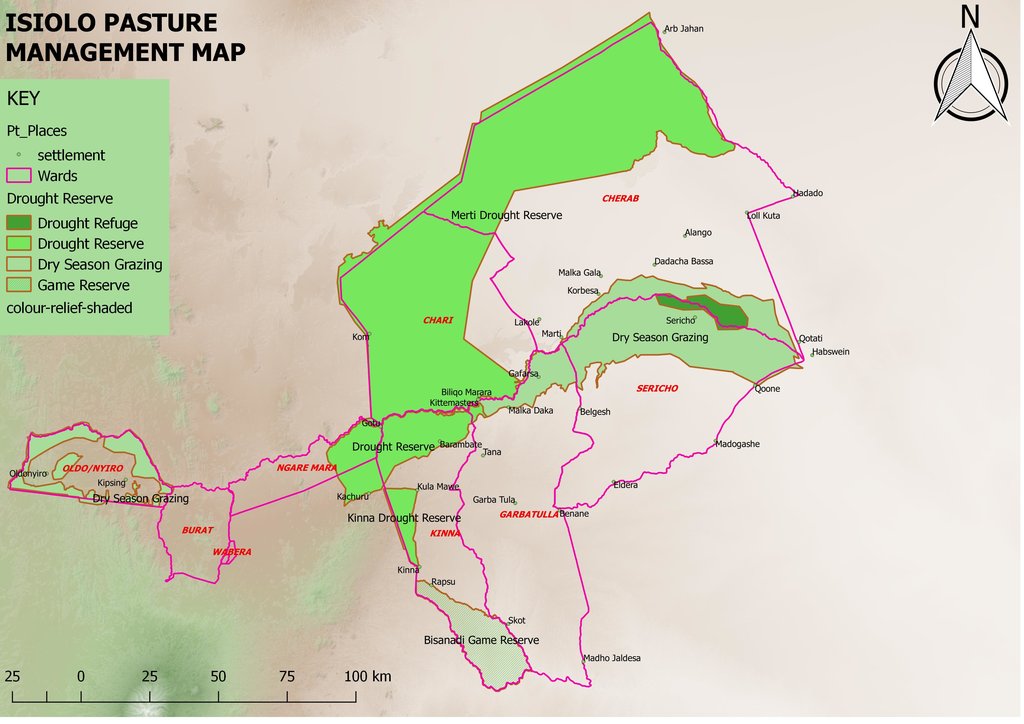Dedha grazing system as a natural resource management technology [肯尼亚]
- 创建:
- 更新:
- 编制者: IBRAHIM JARSO
- 编辑者: Caroline King-Okumu
- 审查者: Hanspeter Liniger, Donia Mühlematter, Barbara *, Rima Mekdaschi Studer, Alexandra Gavilano, Joana Eichenberger
Jars Dedha
technologies_3403 - 肯尼亚
- Dedha grazing system as a natural resource management technology: July 12, 2018 (inactive)
- Dedha grazing system as a natural resource management technology: May 8, 2019 (inactive)
- Dedha grazing system as a natural resource management technology: July 31, 2018 (inactive)
- Dedha grazing system as a natural resource management technology: Sept. 3, 2018 (inactive)
- Dedha grazing system as a natural resource management technology : May 13, 2018 (inactive)
- Dedha grazing system as a natural resource management technology: Nov. 2, 2021 (inactive)
- Dedha grazing system as a natural resource management technology: Nov. 2, 2021 (public)
- Dedha grazing system as a natural resource management technology : April 27, 2018 (inactive)
- Dedha grazing system as a natural resource management technology : April 27, 2018 (inactive)
- Dedha grazing system as a natural resource management technology : April 20, 2018 (inactive)
- Dedha grazing system as a natural resource management technology : March 19, 2018 (inactive)
查看章节
全部展开 全部收起1. 一般信息
1.2 参与该技术评估和文件编制的资源人员和机构的联系方式
有助于对技术进行记录/评估的项目名称(如相关)
Strengthening Adaptation and Resilience to Climate Change in Kenya Plus (StARCK+)有助于对技术进行记录/评估的项目名称(如相关)
Book project: Guidelines to Rangeland Management in Sub-Saharan Africa (Rangeland Management)有助于对技术进行记录/评估的机构名称(如相关)
Resource Advocacy Programme (RAP) - 肯尼亚1.3 关于使用通过WOCAT记录的数据的条件
编制者和关键资源人员接受有关使用通过WOCAT记录数据的条件。:
是
1.4 所述技术的可持续性声明
这里所描述的技术在土地退化方面是否存在问题,导致无法被认为是一种可持续的土地管理技术?:
否
注释:
The technology is a sustainable land management practice that had been used for time immemorial by Boran pastoralists to manage land and land-based resources.
2. SLM技术的说明
2.1 技术简介
技术定义:
The Dedha grazing system is an ancient, traditional governance system for land and its resources practiced by Boran pastoralists. It carefully balances how pastoralists use rangeland resources. The basis of the technology is three grazing rangeland governance zones: wet season grazing, dry season grazing, and drought reserves. There is also water governance based on a traditional hierarchy of rights. Through this system, Boran pastoralists adapt to severe and recurrent droughts.
2.2 技术的详细说明
说明:
This grazing system is applied in Isiolo County, Northern Kenya. The Waso rangelands are inhabited by Boran pastoralists with Somali, Samburu, Rendille and Turkana herders sharing cross-border resources through negotiation. The technology is based on the maintenance of a delicate balance between livestock numbers, the supply of water, and the amount/ quality of standing pasture within the vast grazing area which is water scarce and prone to extreme seasonal variations. Through its main tenet of governing grazing patterns (wet, dry season grazing area and drought reserve) planned use of pasture is decided in large pastoralists’ assemblies attended by elders from a particular “Dedha” (a grazing area, which administratively can be as big as two wards). This process is complicated by dry seasons and droughts of unknown length, with pressure from the community to open grazing reserves. Wrong decisions can spell the end of livelihoods for some families. An ability, which has been gradually eroded over time and by external factors which don’t understand its enormous benefit but there is a project which is using an integrated approach to revive and empower this system.
The Jars a Dedha use water points to manage grazing. Different types of water sources need specific forms of management. The most intensive management occurs during droughts at deep wells and boreholes which require the most labour to operate and maintain, and are the most reliable sources of water. Due to the strategic importance of these resources, management falls to the Jarsa Dedha (council of elders). The use of shallow wells is tightly controlled by both the aba ella (the person who first dug it) and aba erega (the owner of the rotter ) working together. Aba ella is assigned first rights to water. If there is spare capacity then ‘second rights’ are decided by aba erega. Second rights would typically fall to those of a different clan, while ‘third rights’ might fall to a different ethnic group. The Borana customs and culture defines both access to certain wells but also the order of priority for watering animals.
In addition, in consultation with the Dedha council of elders, aba erega manages the use of dams and access to rivers. Generally, use of flowing river water is restricted to the dry season and access is limited to designated watering points. These are located some distance downriver from settlements to minimize disruption to inhabitants and to reduce contamination. Temporary water sources during and after the rains are not subject to control except when their use conflicts with restrictions on grazing areas. After watering their livestock, pastoralists traditionally fill their troughs for wildlife at night. This is intended to prevent wildlife from falling into wells - and to seek God’s blessings.
The high variability of rainfall in pastoral areas leads to similarly variable pasture availability. Therefore, management of grazing resources needs to balance maximizing productivity while ensuring survival. Long-term viability of the system depends on the maintenance of adaptive traits within local breeds, and both maintaining and managing resources strategically. Only within these broader goals is the concept of ‘maximizing productivity’ meaningful.
Mature livestock (gues) which are not lactating are moved to remote pastures. The gues, which make up the majority of community livestock, are herded by young unmarried men. By utilizing remote pastures, grazing resources closer to permanent water sources can be preserved for the dry season and droughts. Pasture within the vicinity of homesteads (maar qaae – literally ‘near grass’) is protected from grazing by non-lactating livestock (this is similar to kalo but a kalo reserve need not be next to the homestead ). This pasture is set aside for young animals (calves, lambs, and kids). Migrating livestock have predefined routes that maintain distance from maar qaae. The Dedha council of elders, therefore, controls settlement patterns to preserve key migratory routes. Movement of livestock between different Dedhas must be prearranged with the respective Dedha council of elders who assess spare capacity in terms of water and grazing.
The floodplain grazing area (chaafa) is crucial because it acts as a refuge for livestock during extreme drought. Grazing in chaafa is strictly prohibited during the wet season and one of the critical decisions for the Jarsa Dedha is when to open chaafa after rains have failed. Due to the relatively moist conditions in chaafa, there are additional challenges to animal and human health: namely trypanosomiasis, ticks, pneumonia, and malaria. Jarsa Dedha make decisions primarily concerning seasonal movements from wet to dry season grazing and also the opening of boreholes and chaafa. The overwhelming local consensus is that efficient resource use depends on the ability ofJarsa Dedha to enforce these regulations
2.3 技术照片
2.5 已应用该技术的、本评估所涵盖的国家/地区/地点
国家:
肯尼亚
区域/州/省:
Isiolo
有关地点的进一步说明:
Kinna town, Kinna Ward, isiolo County
具体说明该技术的分布:
- 均匀地分布在一个区域
如果不知道精确的区域,请注明大致覆盖的区域:
- > 10,000 平方千米
注释:
Kinna Town, Kinna Ward, Garbatulla Sub County, Isiolo County
Isiolo County has area of 25,000Km2 but 80% of the area is used for Nomadic pastoralism.
Map
×2.6 实施日期
如果不知道确切的年份,请说明大概的日期:
- 50多年前(传统)
2.7 技术介绍
详细说明该技术是如何引入的:
- 作为传统系统的一部分(> 50 年)
注释(项目类型等):
It is inherited from generations before.
3. SLM技术的分类
3.1 该技术的主要目的
- 减少、预防、恢复土地退化
- 保护生态系统
- 结合其他技术保护流域/下游区域
- 保持/提高生物多样性
- 降低灾害风险
- 适应气候变化/极端天气及其影响
- 减缓气候变化及其影响
- 创造有益的经济影响
- 创造有益的社会影响
3.2 应用该技术的当前土地利用类型

牧场
粗放式放牧:
- 游牧
- 半游牧畜牧业
集约放牧/饲料生产:
- 改良牧场
动物类型:
- 山羊
- 骆驼
- 绵羊
- cattle
品种:
骆驼
计数:
39100
品种:
山羊
计数:
399000
品种:
绵羊
计数:
361900
注释:
Number of growing seasons per year: 2
Grasses and shrubs which nourishes livestock grows during the rainy seasons
Livestock density: Isiolo county is endowed with a substantial livestock resource base that includes 198,500 cattle, 399,000 goats, 361,900 sheep and 39,100 camels
3.4 供水
该技术所应用土地的供水:
- 雨养
注释:
The pastoralists depend on attendant pasture after the rains which are bi-modal in Isiolo County (Long and Short rains).
3.5 该技术所属的SLM组
- 畜牧业和牧场管理
3.6 包含该技术的可持续土地管理措施

管理措施
- M2:改变管理/强度级别
- M3:根据自然和人文环境进行布局
- M4:活动时间安排的重大变化
3.7 该技术强调的主要土地退化类型

生物性退化
- Bc:植被覆盖的减少
- Bh:栖息地丧失
- Bf:火灾的有害影响
- Bs:质量和物种组成/多样性的下降

水质恶化
- Ha:干旱化
- Hs:地表水良变化
- Hp:地表水水质下降
- Hw:湿地缓冲能力下降
3.8 防止、减少或恢复土地退化
具体数量名该技术与土地退化有关的目标:
- 防止土地退化
- 适应土地退化
4. 技术规范、实施活动、投入和成本
4.1 该技术的技术图纸
技术规范(与技术图纸相关):
The technology is implemented in a vast area of rangelands in Isiolo County which covers around 20,000 km2 inhabited by Boran pastoralists under common management of Isiolo Jars Dedha (Council of elders). The rangelands are subdivided into around 14 arthas (localities) which are separately managed by artha elders and within which there are also ollas (homesteads) which the elders oversee. The elders manage key resources that are essential for pastoral livelihood. The resources are; prime pasture/grazing areas, water points e.g. streams, rivers, springs, shallow wells and pans, wildlife, forests, minerals, sand and other valuable stones e.g. gemstones (bojimine) and quarry, Trees and their products e.g. makuti, medicinal herbs, wild, fruits, resins, gum arabic.
作者:
Ibrahim Jarso
日期:
02/05/2017
4.2 有关投入和成本计算的一般信息
具体说明成本和投入是如何计算的:
- 每个技术区域
注明尺寸和面积单位:
20,000km2
注明雇用劳工的每日平均工资成本:
2,500 Kenya Shillings
4.3 技术建立活动
| 活动 | 时间(季度) | |
|---|---|---|
| 1. | Dedha elders meetings | All seasons |
| 2. | Surveillance of grazing areas | Largely after the rains |
| 3. | Settling resource based disputes | Largely during dry seasons and drought |
| 4. | Deciding on when to access reserved pasture lands | Dry seasons and drought reserves |
| 5. | Negotiations on access to pasture within and across borders | Drought and Long dry seasons |
注释:
Regarding Surveillance of grazing areas, they observe pasture conditions and unwarranted access to preserved grazing areas and report on conditions. The surveillance is elevated after the rains as communities are in wet season grazing area depending on sub-surface water from the rains.
4.5 维护/经常性活动
| 活动 | 时间/频率 | |
|---|---|---|
| 1. | Meetings | All seasons |
| 2. | Surveillance of grazing lands | After the two rainy seasons |
4.7 影响成本的最重要因素
描述影响成本的最决定性因素:
This is a traditional technology of governing rangelands which was started and done voluntarily by the pastoralists. The costs considered are for subsistence of elders undertaking the meetings and discussions on range governance but the process still goes on even without the financial support as the actors involved do it for their own benefits.
5. 自然和人文环境
5.1 气候
年降雨量
- < 250毫米
- 251-500毫米
- 501-750毫米
- 751-1,000毫米
- 1,001-1,500毫米
- 1,501-2,000毫米
- 2,001-3,000毫米
- 3,001-4,000毫米
- > 4,000毫米
有关降雨的规范/注释:
The rains are bimodal (Long rains of March-April-May and Short rains of October-November-December). The rains are unpredictable, erratic and not evenly distributed but pastoralists move to take advantage of difference in pasture quality and quantity.
注明所考虑的参考气象站名称:
Garbatulla automatic weather station
农业气候带
- 半干旱
- 干旱
5% of the area is Semi-arid and 95% is Arid.
5.2 地形
平均坡度:
- 水平(0-2%)
- 缓降(3-5%)
- 平缓(6-10%)
- 滚坡(11-15%)
- 崎岖(16-30%)
- 陡峭(31-60%)
- 非常陡峭(>60%)
地形:
- 高原/平原
- 山脊
- 山坡
- 山地斜坡
- 麓坡
- 谷底
垂直分布带:
- 0-100 m a.s.l.
- 101-500 m a.s.l.
- 501-1,000 m a.s.l.
- 1,001-1,500 m a.s.l.
- 1,501-2,000 m a.s.l.
- 2,001-2,500 m a.s.l.
- 2,501-3,000 m a.s.l.
- 3,001-4,000 m a.s.l.
- > 4,000 m a.s.l.
说明该技术是否专门应用于:
- 不相关
5.3 土壤
平均土层深度:
- 非常浅(0-20厘米)
- 浅(21-50厘米)
- 中等深度(51-80厘米)
- 深(81-120厘米)
- 非常深(> 120厘米)
土壤质地(表土):
- 粗粒/轻(砂质)
- 中粒(壤土、粉土)
土壤质地(地表以下> 20厘米):
- 粗粒/轻(砂质)
- 中粒(壤土、粉土)
表土有机质:
- 中(1-3%)
5.4 水资源可用性和质量
地下水位表:
> 50米
地表水的可用性:
中等
水质(未处理):
良好饮用水
水的盐度有问题吗?:
是
具体说明:
Many boreholes dug in the area is saline
该区域正在发生洪水吗?:
是
规律性:
偶然
关于水质和水量的注释和进一步规范:
The Ewaso Nyiro River floods every rainy seasons
5.5 生物多样性
物种多样性:
- 中等
栖息地多样性:
- 中等
5.6 应用该技术的土地使用者的特征
定栖或游牧:
- 半游牧的
- 游牧的
生产系统的市场定位:
- 生计(自给)
非农收入:
- 低于全部收入的10%
相对财富水平:
- 非常贫瘠
- 贫瘠
个人或集体:
- 个人/家庭
- 团体/社区
机械化水平:
- 手工作业
- 畜力牵引
性别:
- 男人
土地使用者的年龄:
- 青年人
- 中年人
5.7 应用该技术的土地使用者使用的平均土地面积
- < 0.5 公顷
- 0.5-1 公顷
- 1-2 公顷
- 2-5公顷
- 5-15公顷
- 15-50公顷
- 50-100公顷
- 100-500公顷
- 500-1,000公顷
- 1,000-10,000公顷
- > 10,000公顷
这被认为是小规模、中规模还是大规模的(参照当地实际情况)?:
- 大规模的
5.8 土地所有权、土地使用权和水使用权
土地所有权:
- 社区/村庄
土地使用权:
- 社区(有组织)
用水权:
- 社区(有组织)
5.9 进入服务和基础设施的通道
健康:
- 贫瘠
- 适度的
- 好
教育:
- 贫瘠
- 适度的
- 好
技术援助:
- 贫瘠
- 适度的
- 好
就业(例如非农):
- 贫瘠
- 适度的
- 好
市场:
- 贫瘠
- 适度的
- 好
能源:
- 贫瘠
- 适度的
- 好
道路和交通:
- 贫瘠
- 适度的
- 好
饮用水和卫生设施:
- 贫瘠
- 适度的
- 好
金融服务:
- 贫瘠
- 适度的
- 好
6. 影响和结论性说明
6.1 该技术的现场影响
社会经济效应
生产
畜牧生产
SLM之前的数量:
0
SLM之后的数量:
2
注释/具体说明:
The frequent and Severe drought has reduced the number of livestock and created a big group of pastoral dropouts but with improved rangeland management through the revived traditional systems animal production is gradually improving.
土地管理
SLM之前的数量:
0
SLM之后的数量:
2
水资源可用性和质量
饮用水的可用性
SLM之前的数量:
0
SLM之后的数量:
1
家畜用水的可用性
SLM之前的数量:
0
SLM之后的数量:
2
生态影响
水循环/径流
水量
SLM之前的数量:
0
SLM之后的数量:
2
水的回收/收集
SLM之前的数量:
0
SLM之后的数量:
2
生物多样性:植被、动物
植被覆盖
SLM之前的数量:
0
SLM之后的数量:
2
外来入侵物种
SLM之前的数量:
0
SLM之后的数量:
1
栖息地多样性
SLM之前的数量:
0
SLM之后的数量:
2
减少气候和灾害风险
干旱影响
SLM之前的数量:
-2
SLM之后的数量:
2
微气候
SLM之前的数量:
0
SLM之后的数量:
2
6.2 该技术的场外影响已经显现
水资源可用性
SLM之前的数量:
0
SLM之后的数量:
2
注释/具体说明:
The preserved grazing lands regenerate and is less degraded. The improved environment in the preserved areas lead to less erosion and proper recharge of underground water. This was observed in Kinna Village where the Odha Springs improved its flow and also the recharge to Moliti shallow wells were improved with proper grazing management in Kinna.
旱季稳定可靠的水流
SLM之前的数量:
0
SLM之后的数量:
2
6.3 技术对渐变气候以及与气候相关的极端情况/灾害的暴露和敏感性(土地使用者认为的极端情况/灾害)
渐变气候
渐变气候
| 季节 | 增加或减少 | 该技术是如何应对的? | |
|---|---|---|---|
| 季节性温度 | 旱季 | 增加 | 非常好 |
| 季雨量 | 旱季 | 减少 | 非常好 |
气候有关的极端情况(灾害)
气候灾害
| 该技术是如何应对的? | |
|---|---|
| 干旱 | 非常好 |
| 陆地火灾 | 好 |
水文灾害
| 该技术是如何应对的? | |
|---|---|
| 比较和缓的(河道)洪水 | 好 |
| 山洪暴发 | 适度 |
生物灾害
| 该技术是如何应对的? | |
|---|---|
| 流行病 | 适度 |
其他气候相关的后果
其他气候相关的后果
| 该技术是如何应对的? | |
|---|---|
| 缩短生长期 | 非常好 |
6.4 成本效益分析
技术收益与技术建立成本相比如何(从土地使用者的角度看)?
短期回报:
稍微积极
长期回报:
积极
技术收益与技术维护成本/经常性成本相比如何(从土地使用者的角度看)?
短期回报:
稍微积极
长期回报:
稍微积极
6.5 技术采用
- > 50%
如若可行,进行量化(住户数量和/或覆盖面积):
80% of Isiolo County (Around 24,500 Households)
在所有采用这项技术的人当中,有多少人是自发的,即未获得任何物质奖励/付款?:
- 91-100%
6.6 适应
最近是否对该技术进行了修改以适应不断变化的条件?:
是
若是,说明它适应了哪些变化的条件:
- 气候变化/极端气候
具体说明技术的适应性(设计、材料/品种等):
The grazing patterns were made more flexible and the rules made stricter.
6.7 该技术的优点/长处/机会
| 土地使用者眼中的长处/优势/机会 |
|---|
| It is the cheapest and easiest way of managing the rangelands for now and for posterity. |
| It provides room for flexibility of decision making as seasonal variations occur. |
| 编制者或其他关键资源人员认为的长处/优势/机会 |
|---|
| It is conservative and less costly to implement in the vast rangelands with few incentives. |
| It is a legitimate system recognized by all pastoralist for management of their rangeland resources. |
| It can easily be adapted to govern any pastoral rangelands all over the world (Universal). |
6.8 技术的弱点/缺点/风险及其克服方法
| 土地使用者认为的弱点/缺点/风险 | 如何克服它们? |
|---|---|
| There is no law protecting it. | Government needs to establish a law that recognizes and protects this technology. |
| Rich pastoralists can forego local rules and corrupt the systems overseeing the grazing plans. | Ensuring accountability for decisions made. As few lead elders can be corrupted and their decisions compromised but when the decisions on grazing are largely made in common meetings of all elders, the decisions are normally watertight and cant be influenced negatively. |
| 编制者或其他关键资源人员认为的弱点/缺点/风险 | 如何克服它们? |
|---|---|
| Cross-border pastoralists are not aware of the Technology and tend to undermine it. | Improve awareness of the technology among the cross-border pastoralists that also access Isiolo rangelands. |
7. 参考和链接
7.1 信息的方法/来源
- 实地考察、实地调查
2
- 与土地使用者的访谈
6
- 根据报告和其他现有文档进行编译
2
(现场)数据是什么时候汇编的?:
17/11/2017
7.3 链接到网络上的相关信息
标题/说明:
Evolving customary institutions by patison and tari
URL:
pubs.iied.org/pdfs/10076IIED.pdf
标题/说明:
Strengthening Customary institutions the case of Isiolo County Northern Kenya by Caroline, Tari and Jarso
URL:
www.celep.info/wp-content/uploads/2015/11/Strengthening-local-institutions.pdf
链接和模块
全部展开 全部收起链接
无链接
模块
无模块


